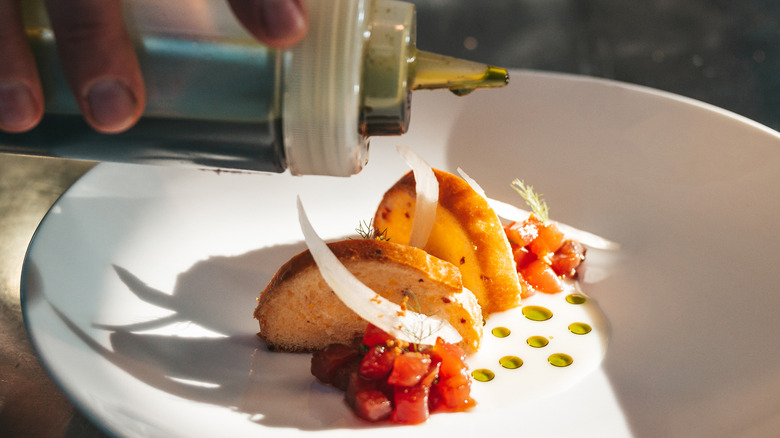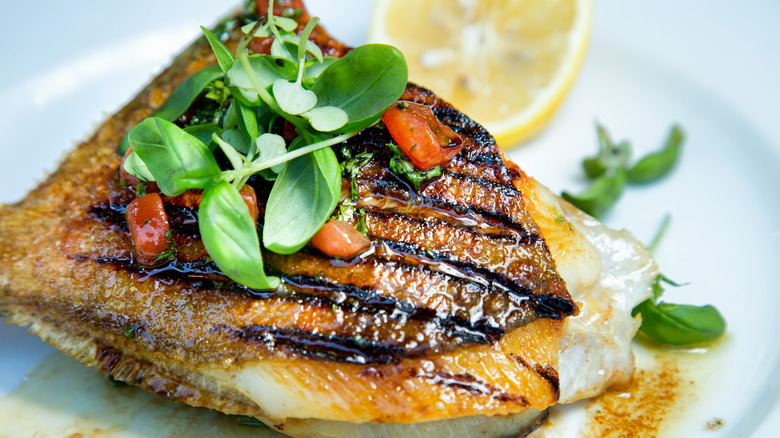The Textural Tip For Plating Food Like A Pro And Impressing Dinner Guests
From the color of the plate to the physical placement of the food, plating is like creating a painting – balancing multiple elements harmoniously within set parameters. The eyes, olfactory senses, and taste buds all work together to experience food, and the visual appeal of a dish actually impacts whether a diner is likely to think it tastes good or not. To make even a casual meal memorable, try pairing opposite textures together.
The juxtaposition of complementary yet contrasting textures makes a big difference. If their plating is more visually impressive, customers perceive meals as being higher quality and restaurants can charge higher menu prices. But, at home, opposite texture combinations will also impress your dinner guests (which rocks). It's a practice that the pros follow, but chances are, you've already been playing with textured plating without even realizing it.
A killer everyday example of this juxtaposed texture plating is the classic NYC lox bagel. A round bagel dotted with sesame seeds is smeared with smooth cream cheese and filled with strips of wiggly lox, oblong capers, ridged red onions, and a sprig of leafy dill. You've got chewy, smooth, soft, crunchy, and leafy, all in one bite. French onion soup plays with contrasting textures, too, as do spaghetti and meatballs. A banana split with sprinkles, cherry, chopped nuts, and whipped cream is a mixed-texture playground.
To take your dinner-party plating to the next level, we've rounded up some ideas to help you mix textures on purpose.
Juxtapose and keep guests on their toes
To plate with personality, a few tools might be helpful. Tongs, squeezy bottles, piping bags, and pastry brushes are all fair game in the gastro-artist arsenal. In terms of where to put things, start by imagining a curve on the plate and placing food on it, with a few breakout morsels.
You could plate round, solid mussels atop a swoosh of a smooth vegetable puree. Or, top a grilled ribeye steak with blue cheese crumbles. Caviar on a deviled egg is a mixed-texture fantasia. For dessert, top an egg custard tart with bulbous raspberries and set it on an abstract piping of chocolate sauce around the plate. You might even want to incorporate different textures with the plate itself. Homemade pottery, scalloped tea plates, or a ceramic crock for soups and stews all add visual and sensory stimuli.
As you build your plate, work from the inside out, adding layers of texture as you go. Just make sure you plan what to do before you start. Topping a dish with chives is a pretty safe way to add instant texture and visual appeal. Play around with other eye-catching toppings like thinly sliced radishes, pea shoots, a drizzle of a colorful dressing, chiffonade herbs, edible flowers, microgreens, sesame seeds, furikake, or riced cauliflower. For a thrifty finishing touch, repurpose leftover food into a flavorful puree, to dot around the plate.

